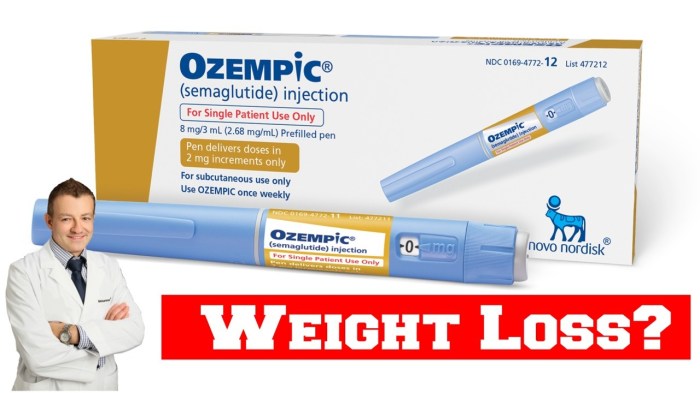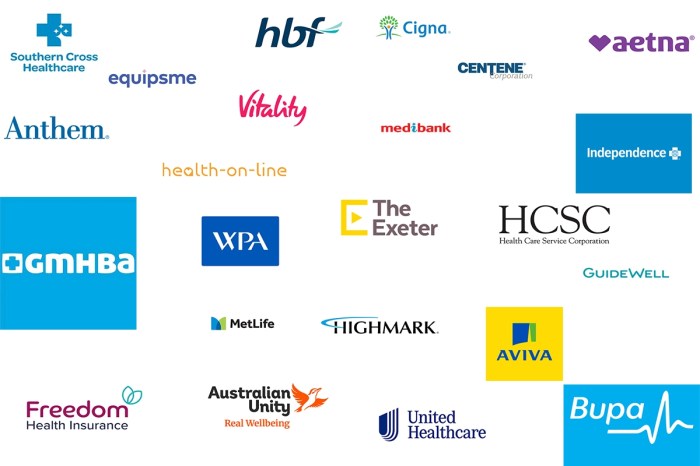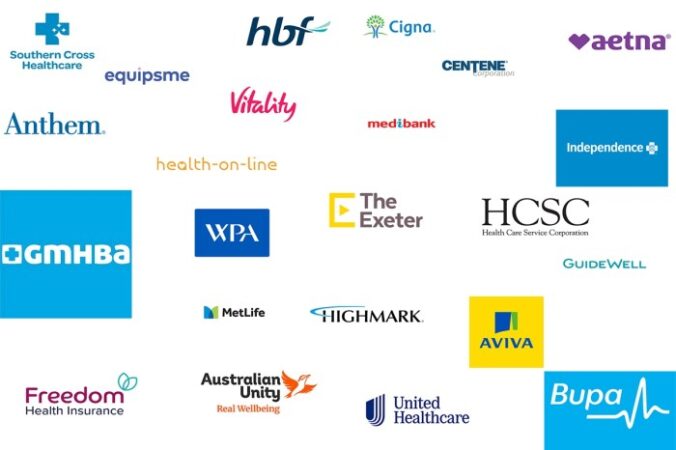
- Understanding Your Current Insurance Plan
- Evaluating Your Needs and Priorities
- Researching and Comparing Insurance Companies
- Open Enrollment and Switching Periods
- Understanding Your Options
- Seeking Professional Advice
- Finalizing Your Decision
- Outcome Summary
- FAQ Summary: How To Change Medical Insurance Companies
How to change medical insurance companies can feel like a daunting task, but it doesn’t have to be. Switching insurance plans can be a smart move to get better coverage, lower costs, or simply find a plan that better fits your needs. Whether you’re unhappy with your current plan, facing a life change like starting a family, or simply want to explore better options, this guide will walk you through the process step-by-step.
Understanding your current insurance plan is the first step. Take a close look at your coverage details, including deductibles, co-pays, and out-of-pocket maximums. Identify any specific services or treatments that aren’t covered. Then, evaluate your medical needs and priorities. What services are essential to you? What health conditions do you have, or might you develop in the future? Finally, research and compare different insurance companies and their offerings. Don’t just focus on the monthly premiums; consider the overall value and coverage of each plan.
Understanding Your Current Insurance Plan

Before you start shopping around for a new medical insurance plan, it’s crucial to understand the ins and outs of your current coverage. This knowledge will help you compare apples to apples when you’re looking at other options.
Benefits and Limitations
Knowing the benefits and limitations of your current plan is essential for making informed decisions about your healthcare. This information helps you understand what your plan covers and what it doesn’t, which can be crucial when choosing a new plan.
Coverage Details
Understanding your coverage details, including deductibles, co-pays, and out-of-pocket maximums, is key to understanding the financial aspects of your healthcare. These factors can significantly impact your out-of-pocket costs, so it’s important to know how they work.
Your deductible is the amount you need to pay out-of-pocket before your insurance starts covering costs.
Your co-pay is a fixed amount you pay for each service, such as a doctor’s visit or prescription.
Your out-of-pocket maximum is the total amount you’ll pay for healthcare costs in a year, including deductibles, co-pays, and coinsurance. Once you reach this limit, your insurance covers 100% of your eligible medical expenses.
Services and Treatments Not Covered
Many insurance plans have limitations on what services or treatments they cover. It’s crucial to know what your current plan doesn’t cover, so you can factor that into your decision-making process when considering a new plan.
- Some plans may not cover certain types of medical treatments, like experimental therapies or cosmetic procedures.
- Others may have limits on the number of visits or treatments you can receive.
- It’s essential to understand the limitations of your current plan to avoid unexpected costs or surprises.
Evaluating Your Needs and Priorities
Switching insurance companies is a big decision, so it’s important to figure out what’s most important to you. Think about your health needs and what you want from your insurance plan.
Essential Medical Services
You’ll want to make sure your new plan covers the services you need. This includes things like:
- Preventative care (like checkups and screenings)
- Prescription drugs
- Hospitalization
- Mental health services
- Dental and vision care (if you want them included)
Health History and Future Needs
Consider your past health and any potential future needs.
- Do you have any chronic conditions that require regular treatment?
- Are you planning to have a family in the near future?
- Are you concerned about potential future health issues?
Preferred Healthcare Providers
It’s important to be able to see doctors you trust.
- Do you have a primary care physician you want to keep?
- Do you need to see specialists for certain conditions?
- Are there any hospitals you prefer?
Researching and Comparing Insurance Companies
Now that you understand your current insurance plan and what you need from your next plan, it’s time to start researching and comparing different insurance companies. This step is crucial because it allows you to find the best plan that fits your needs and budget.
Comparing Insurance Companies and Their Offerings
To compare insurance companies and their offerings, it’s helpful to create a table with the following columns:
- Monthly premiums
- Deductibles
- Co-pays
- Coverage details
- Network size
This table will help you quickly compare the costs and benefits of different plans. You can also use online comparison tools to help you with this process.
Pros and Cons of Different Insurance Companies
Once you have a list of potential insurance companies, it’s important to research the pros and cons of each company. You can find this information on the company’s website, through independent reviews, and by talking to other people who have experience with the company.
Here are some common pros and cons of different insurance companies:
- Pros:
- Wide network of doctors and hospitals
- Lower monthly premiums
- Good customer service
- Strong financial stability
- Cons:
- High deductibles
- Limited coverage
- Poor customer service
- Limited network of doctors and hospitals
It’s important to remember that every insurance company is different, and what works for one person may not work for another. The best way to find the right insurance company for you is to do your research and compare your options carefully.
Open Enrollment and Switching Periods

Open enrollment is a time period when you can change your health insurance plan without a qualifying event. This is usually an annual event that allows you to shop around for a new plan or make changes to your current one. Switching insurance companies during open enrollment can be a great way to save money, get better coverage, or find a plan that better suits your needs.
Open Enrollment Periods
Open enrollment periods vary depending on the type of health insurance you have. For individual health insurance plans purchased through the Health Insurance Marketplace, the open enrollment period is typically from November 1st to January 15th. For employer-sponsored health insurance plans, open enrollment typically occurs in the fall, usually for a period of a few weeks.
Switching Insurance Companies During Open Enrollment
Switching insurance companies during open enrollment is a relatively simple process. You can typically do it online, by phone, or by mail.
- First, you’ll need to research and compare different insurance plans.
- Once you’ve found a plan you like, you can apply for it through the insurance company’s website or by contacting them directly.
- The insurance company will then review your application and let you know if you’ve been approved.
- If you’re approved, your new insurance plan will take effect on the first day of the next coverage period.
Potential Penalties or Waiting Periods
If you switch insurance companies outside of open enrollment, you may be subject to a penalty or waiting period. This is because insurance companies are not required to cover you for certain medical conditions if you switch plans outside of open enrollment.
For example, if you have a pre-existing condition, such as diabetes, you may have to wait a certain period of time before your new insurance plan will cover it.
Switching During Open Enrollment
If you switch plans during open enrollment, you won’t have to worry about penalties or waiting periods. This is because open enrollment is a time when insurance companies are required to cover you for any pre-existing conditions.
Understanding Your Options
So, you’re ready to ditch your current health insurance plan and find something better. But with all the different types of plans out there, it can feel like you’re trying to decipher a foreign language. Don’t worry, we’re here to break it down for you.
Types of Medical Insurance Plans
Understanding the different types of plans is key to finding one that fits your needs and budget. Here’s a breakdown of the most common types:
- Health Maintenance Organization (HMO): Think of HMOs as the “exclusive club” of health insurance. You get to choose a primary care physician (PCP) within the network, and they act as your gatekeeper. You need a referral from your PCP to see specialists, and you’ll usually pay a lower premium compared to other plans.
- Preferred Provider Organization (PPO): PPOs are like the “cool kids” of health insurance. You have more flexibility, as you can see any doctor in the network without a referral. However, you’ll pay a higher premium and copays compared to HMOs.
- Point-of-Service (POS): POS plans are like the “hybrid” of HMOs and PPOs. You choose a PCP within the network, but you have the option to go outside the network for care, although you’ll pay higher out-of-pocket costs.
- Exclusive Provider Organization (EPO): EPOs are like the “strict” version of HMOs. You must choose a PCP within the network and get referrals for specialists. However, you can’t go outside the network for care.
- High Deductible Health Plan (HDHP): HDHPs are like the “budget-friendly” option. You pay a lower premium, but you’ll have a high deductible. This means you’ll pay more out-of-pocket before your insurance kicks in.
Key Differences and Suitability
Each plan type has its own unique features, so choosing the right one depends on your individual needs and priorities.
- Cost: HMOs generally have the lowest premiums, followed by POS, EPO, and PPOs. HDHPs offer the lowest premiums but have high deductibles.
- Flexibility: PPOs offer the most flexibility, allowing you to see any doctor within the network without a referral. HMOs and EPOs have stricter rules.
- Network Size: PPOs typically have the largest networks, followed by POS, HMO, and EPO.
- Out-of-Pocket Costs: HMOs and EPOs usually have lower out-of-pocket costs, while PPOs and POS plans have higher costs. HDHPs have high deductibles but can have lower premiums.
Advantages and Disadvantages, How to change medical insurance companies
Each plan type comes with its own set of pros and cons.
- HMO:
- Advantages: Lower premiums, potentially lower out-of-pocket costs.
- Disadvantages: Less flexibility, need referrals for specialists.
- PPO:
- Advantages: More flexibility, wider network.
- Disadvantages: Higher premiums, higher out-of-pocket costs.
- POS:
- Advantages: Offers a balance between HMO and PPO features.
- Disadvantages: Can be more complex, higher out-of-pocket costs for going outside the network.
- EPO:
- Advantages: Lower premiums, potentially lower out-of-pocket costs.
- Disadvantages: Least flexible, no out-of-network coverage.
- HDHP:
- Advantages: Lower premiums, tax advantages for HSA contributions.
- Disadvantages: High deductibles, high out-of-pocket costs until deductible is met.
Seeking Professional Advice
You’ve done your research, compared plans, and considered your options. But sometimes, navigating the world of medical insurance can feel like trying to decipher a foreign language. That’s where seeking professional advice comes in. An insurance broker can be your trusted guide, helping you find the right plan that fits your needs and budget.
The Role of an Insurance Broker
Insurance brokers are licensed professionals who act as intermediaries between you and insurance companies. They have extensive knowledge of different insurance plans and can provide personalized guidance based on your specific circumstances.
Services Offered by Insurance Brokers
Brokers offer a range of services to help you find the best insurance plan. These services include:
- Needs Assessment: Brokers will discuss your health needs, coverage preferences, and budget to understand your unique requirements.
- Plan Research and Comparison: They will research and compare plans from various insurance companies, presenting you with options that align with your needs and budget.
- Application Assistance: Brokers can help you complete the application process and ensure all necessary documents are submitted correctly.
- Negotiation: They can negotiate with insurance companies on your behalf to secure the best possible rates and coverage.
- Ongoing Support: Brokers can provide ongoing support throughout the year, answering questions and helping you navigate any changes in your coverage.
Finding a Reputable Insurance Broker
Finding a reputable and experienced insurance broker is crucial. Here are some tips to help you in your search:
- Ask for Referrals: Talk to friends, family, or colleagues who have experience with insurance brokers. They can provide valuable insights and recommendations.
- Check Credentials: Ensure the broker is licensed and has a good track record. You can verify their credentials through the state insurance department’s website.
- Look for Expertise: Seek a broker who specializes in medical insurance and has experience working with individuals in your situation.
- Consider Fees: Understand the broker’s fees upfront. Some brokers charge a flat fee, while others may receive commissions from insurance companies.
- Interview Brokers: Schedule consultations with several brokers to discuss your needs and compare their services. Choose a broker who you feel comfortable working with and who understands your priorities.
Finalizing Your Decision
You’ve done your research, compared plans, and considered your needs. Now it’s time to make a decision and choose the insurance plan that’s right for you. But before you hit that “enroll” button, let’s review a few key factors to make sure you’re making the best choice.
Choosing the Right Plan
It’s time to make your final decision. You’ve got all the information you need, now it’s time to pick the plan that best fits your needs and budget. Here’s a checklist of factors to consider:
- Coverage: Make sure the plan covers the services you need, such as doctor’s visits, prescription drugs, and hospitalization.
- Cost: Consider the monthly premium, deductible, copayments, and coinsurance.
- Network: Ensure your doctors and hospitals are in the plan’s network.
- Customer Service: Read reviews and check the company’s reputation for customer service.
Enrolling in Your New Plan
Once you’ve chosen a plan, you’ll need to enroll. The enrollment process varies depending on the insurance company, but generally involves the following steps:
- Apply: Fill out an application online, by phone, or by mail.
- Provide Information: You’ll need to provide personal information, such as your Social Security number, date of birth, and address.
- Pay Your Premium: You may need to pay your first month’s premium to activate your coverage.
- Receive Your ID Card: Once your enrollment is complete, you’ll receive an insurance card that you can use to access your benefits.
Managing the Transition
Switching insurance plans can be a bit of a hassle, but there are ways to make the transition smoother:
- Contact Your Current Insurance Company: Let them know you’re switching plans so they can provide you with any necessary information.
- Inform Your Doctors: Notify your doctors and other healthcare providers about your new insurance plan.
- Update Your Medical Records: Make sure your new insurance company has access to your medical records.
- Keep Your Old Insurance Card: Keep your old insurance card handy in case you need it for any outstanding claims.
Outcome Summary

Changing medical insurance companies can be a smart way to save money, get better coverage, or simply find a plan that better fits your lifestyle. By understanding your current plan, evaluating your needs, researching different options, and seeking professional advice, you can make an informed decision that will ensure you have the right medical coverage for years to come. Remember, don’t be afraid to ask questions and explore all your options. You deserve the best possible healthcare, and changing insurance companies can be a key step in achieving that goal.
FAQ Summary: How To Change Medical Insurance Companies
What is the open enrollment period for changing medical insurance companies?
The open enrollment period for changing medical insurance companies is typically from November 1st to January 15th each year. However, you may be able to change plans outside of this period if you experience a qualifying life event, such as getting married, having a baby, or losing your job.
What are the potential penalties for switching insurance plans outside of open enrollment?
If you switch insurance plans outside of open enrollment, you may be subject to a penalty or waiting period. The specific penalties vary depending on your insurance company and the type of plan you’re switching to. It’s important to check with your insurance company or an insurance broker for the most up-to-date information.
How long is the waiting period for new insurance plans?
The waiting period for new insurance plans can vary depending on the insurance company and the type of plan you’re switching to. It’s typically between 30 and 90 days. During this waiting period, you may not be able to use your new insurance plan for certain services or treatments.



